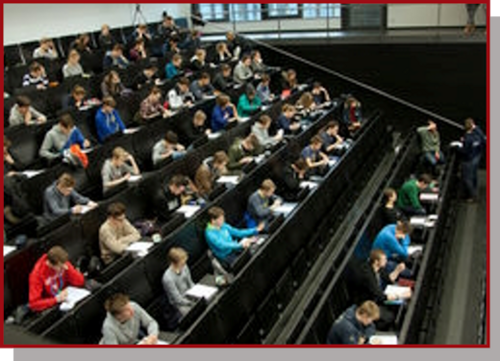Prof. Dr. Maria Wächtler
Fachbereich Chemie, RPTU Kaiserslautern
spricht zum Thema:
Charge-carrier dynamics in hybrid materials based on colloidal semiconductor nanocrystals for light-driven catalysis
A long-standing challenge is the development of artificial photosynthetic approaches for capturing and storing the energy of sunlight in the chemical bonds of a fuel, e.g. molecular hydrogen, offering a clean, sustainable and abundant source of energy. In this respect, colloidal nanostructured semiconductor materials are explored extensively as photosensitizers and photocatalysts. To push forward the development of functional materials based on semiconductor nanocrystals, function immanent exciton and charge-separation/recombination dynamics in relation to structural parameters need to be understood. Factors like composition, structure and dimensions of the semiconductor particles, the nature of cocatalysts and the type of surface ligands are severely influencing the efficiencies for solar to hydrogen conversion. By applying time-resolved transient absorption and photoluminescence spectroscopy we strive to reveal the connections between structure, charge carrier dynamics and the targeted function. To illustrate this approach, I will give a brief overview on the results of our studies on CdSe@CdS seeded nanorods functionalized with metal particles of varying composition and morphology as cocatalyst and the insights gained on the connection between charge separation at the nanosized semiconductor/metal interface and activity for hydrogen evolution.[1, 2] Besides the transfer of electrons to the cocatalyst, a key step in these heterostructures is hole localization in the CdSe seed which enables the formation of long-lived charge separation supporting charge accumulation at the catalytic reaction centers necessary to drive multi-electron redox reactions. Latest results revealed the influence of the nature of the surface ligands on the efficiency of the hole localization process.[3] Finally, interfacing semiconductor nanocrystals with molecular reaction centers presents an attractive alternative to metal particles and equally high charge transfer rates as at semiconductor/metal interfaces can be reached in principle.[4] Nevertheless, anchoring strategies with sufficient stability and supporting efficient transfer of multiple charge carriers and reducing unwanted charge recombination, e.g. by anchoring units serving as electron relay, still need to be established. First results indicate that bioinspired redox-active polymer matrices could play an important role in the future design of photocatalytically active inorganic/organic hybrid materials.[5]
References:
[1] J. Phys. Chem. C 2016, 120, 24491-24497.
[2] Nano Lett. 2018, 18, 357-364.
[3] Catalysts 2020, 10, 1143.
[4] J. Phys.Chem. Lett. 2021, 12, 4385-4391.
[5] ACS Appl. Nano Mat., 2021, 4,12913-12919.
Acknowledgement:
Financial support is acknowledged by the German Research Foundation (DFG) – TRR234 CataLight (project number 364549901, project B4, Z2) and CRC1375 NOA (project number 398816777, project C4), the German-Israeli Foundation for Scientific Research and Development (GIF, grant number G-1535-500.15/2021), the Fonds der Chemischen Industrie (FCI), the COST Action CM1202 PERSPECT-H2O and the Chinese Scholarship Council Scholarship (CSC)
Interessenten sind herzlich eingeladen.
Prof. Dr. Klinke

